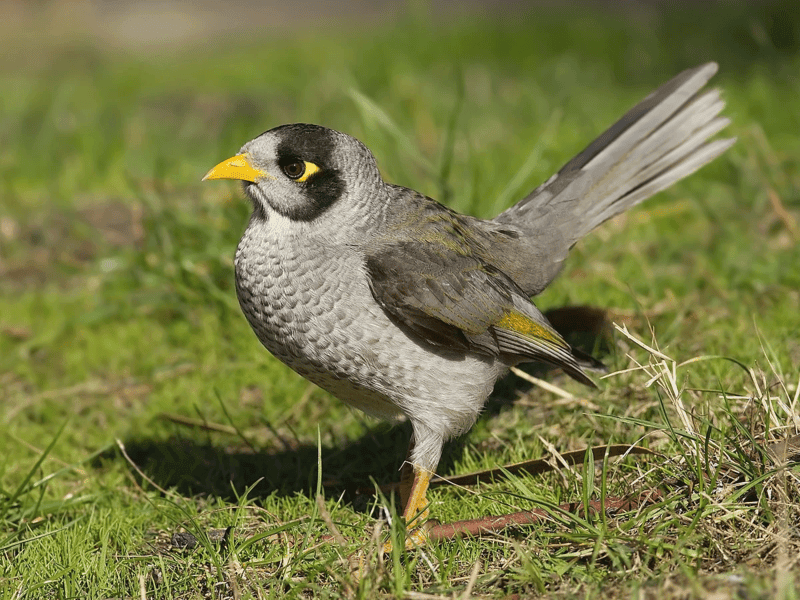When noisy miner birds started taking over my backyard, I quickly realized they were more than just a minor inconvenience. These loud, territorial birds seemed to scare off every other species, turning my once-peaceful garden into a battleground. Over time, I’ve learned a few effective ways to discourage these noisy visitors without harming them. If they’ve taken over your outdoor space too, I hope these tips help restore some balance.
Understanding Noisy Miner Birds
Noisy miner birds, native to Australia, are bold and highly social. They thrive in urban areas, where their aggressive behavior often pushes out smaller, more timid birds. Their loud calls, which they use to communicate and defend their territory, are impossible to ignore. While they play a role in their ecosystem, their dominance can disrupt local biodiversity.
Before diving into solutions, I found it helpful to observe their behavior. Understanding their habits made it easier to implement strategies that worked. These birds are attracted to open spaces and feed on nectar, fruit, and insects, so changing the environment is a good starting point.
Also read: How to Get Rid of Indian Myna Birds in Australia?

Making the Environment Less Attractive
One of the first things I did was rethink my garden layout. Noisy miners love open, cleared spaces with sparse vegetation. Adding dense, native plants helped create an environment less appealing to them and more inviting for smaller bird species.
- Planting dense shrubs: Shrubs like bottlebrush and grevillea are great choices. Their dense foliage provides shelter for smaller birds, giving them a safe space to escape the aggressive miners.
- Using prickly plants: Incorporating plants with thorns or spiky leaves made certain areas less accessible to the miners. This also gave other species a chance to thrive.
- Minimizing open areas: Creating pockets of dense vegetation broke up the open spaces noisy miners prefer. This change significantly reduced their activity in my garden.
Also read: What to Feed a Baby Bird: A Comprehensive Guide for Beginners
Reducing Food Sources
Noisy miners are opportunistic feeders, and keeping their preferred food out of reach helped deter them. I started by removing any food sources they were taking advantage of.
- Limiting flowering plants: While I love nectar-rich flowers, they attracted miners in droves. Planting less-showy natives or flowers that bloom at different times helped balance the situation.
- Avoiding bird feeders with nectar: Feeders designed for nectar-eating birds were a magnet for noisy miners. Removing these feeders or switching to seed-based options discouraged them.
- Covering fruit trees: Netting over fruit trees protected the produce and made it harder for miners to feast.

Encouraging Natural Predators
Creating an environment where natural predators could thrive was another effective way to manage the noisy miner population. I focused on inviting larger birds of prey by ensuring there were tall trees nearby where they could perch.
- Providing perching spots: Leaving tall, sturdy branches intact gave raptors a vantage point for hunting.
- Minimizing artificial perches: Removing low, artificial structures like fences or poles discouraged miners from gathering in large groups.
Managing Noise and Activity
One of the most frustrating aspects of noisy miners is, well, their noise. Their constant chatter made it difficult to enjoy the garden. By observing their patterns, I found ways to minimize their impact.
- Breaking up their gatherings: Miners are bold in groups but less confident alone. Adding moving objects like wind chimes, reflective tape, or pinwheels disrupted their gatherings. These didn’t harm the birds but made them less comfortable staying in one spot for long.
- Using sound deterrents: Ultrasonic bird repellers were helpful in discouraging their presence. These devices emit sounds that humans can’t hear but are unpleasant for birds. Adjusting the placement and frequency kept the effect consistent.

Building a Bird-Friendly Space
While the goal was to discourage noisy miners, I wanted to ensure other bird species could thrive. Creating a welcoming environment for diverse wildlife restored the balance in my backyard.
- Providing water sources: Adding birdbaths in shaded, quiet areas helped attract smaller birds. I placed them near dense vegetation to give them an easy escape route.
- Adding nesting boxes: Installing nesting boxes specifically designed for smaller birds encouraged them to stay. I chose designs with narrow openings to keep miners out.
- Offering diverse food sources: Providing a variety of seeds and fruits that noisy miners don’t prefer helped attract other species.
Patience and Consistency Pay Off
One thing I’ve learned is that managing noisy miners requires patience. These birds are intelligent and adaptable, so no single solution works overnight. Consistency is key. Over time, the changes I made created a garden that felt more balanced and peaceful.
It’s also worth noting that noisy miners are a protected species in many areas. This means any control methods must be humane and compliant with local laws. For me, the goal wasn’t to eliminate them entirely but to encourage a more harmonious environment where all birds could coexist.

Reflecting on the Journey
Looking back, the process of managing noisy miner birds taught me a lot about the natural world. It also deepened my appreciation for the delicate balance of ecosystems. While these birds can be challenging, they’re a reminder of the need to coexist with wildlife in a thoughtful way.
Now, my garden has transformed. The once-overwhelming sound of noisy miners has been replaced by a chorus of different bird species. Watching smaller birds dart in and out of the dense shrubs I planted is a rewarding sight. Every change I made, no matter how small, contributed to creating a space where all creatures feel at home.

